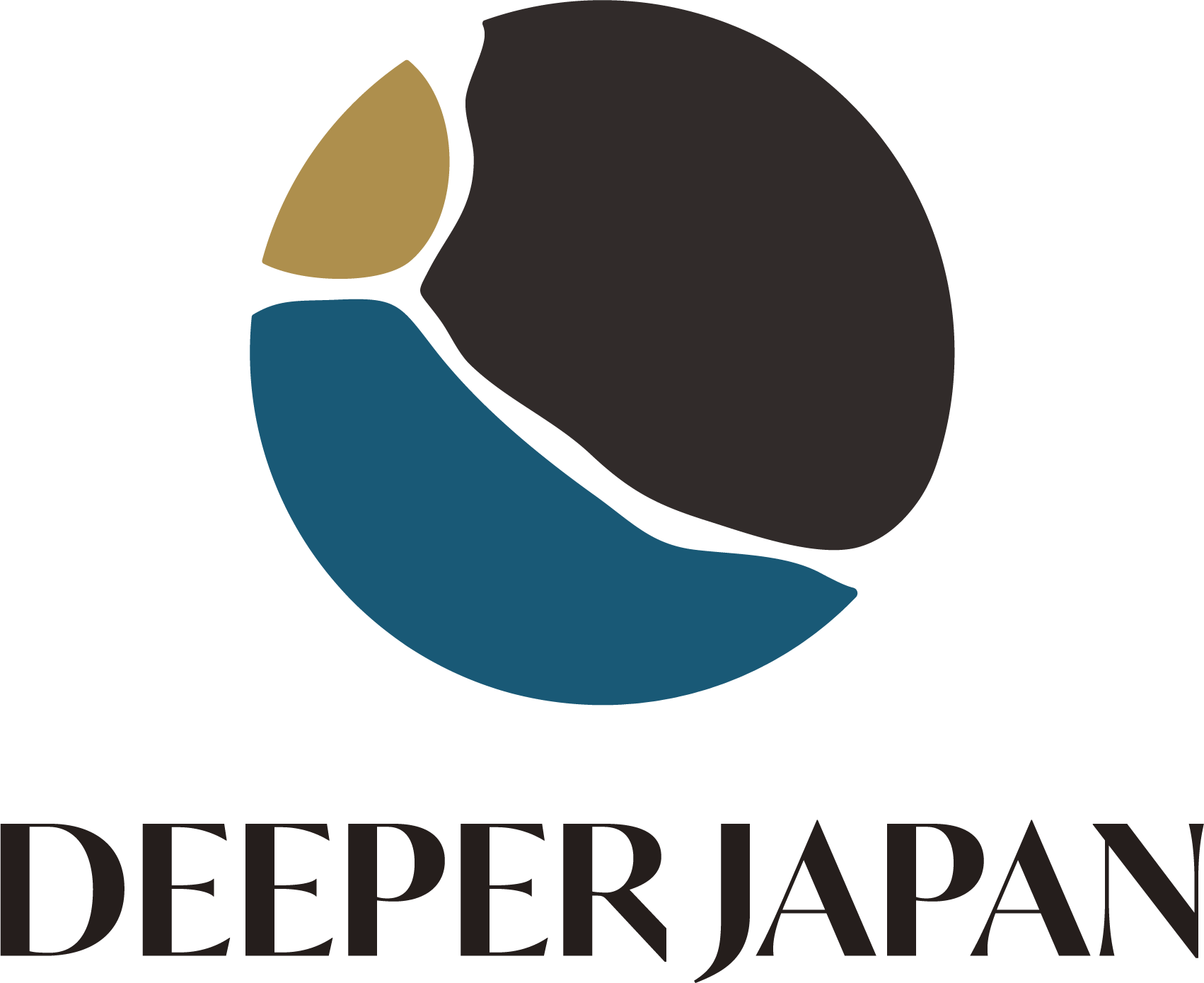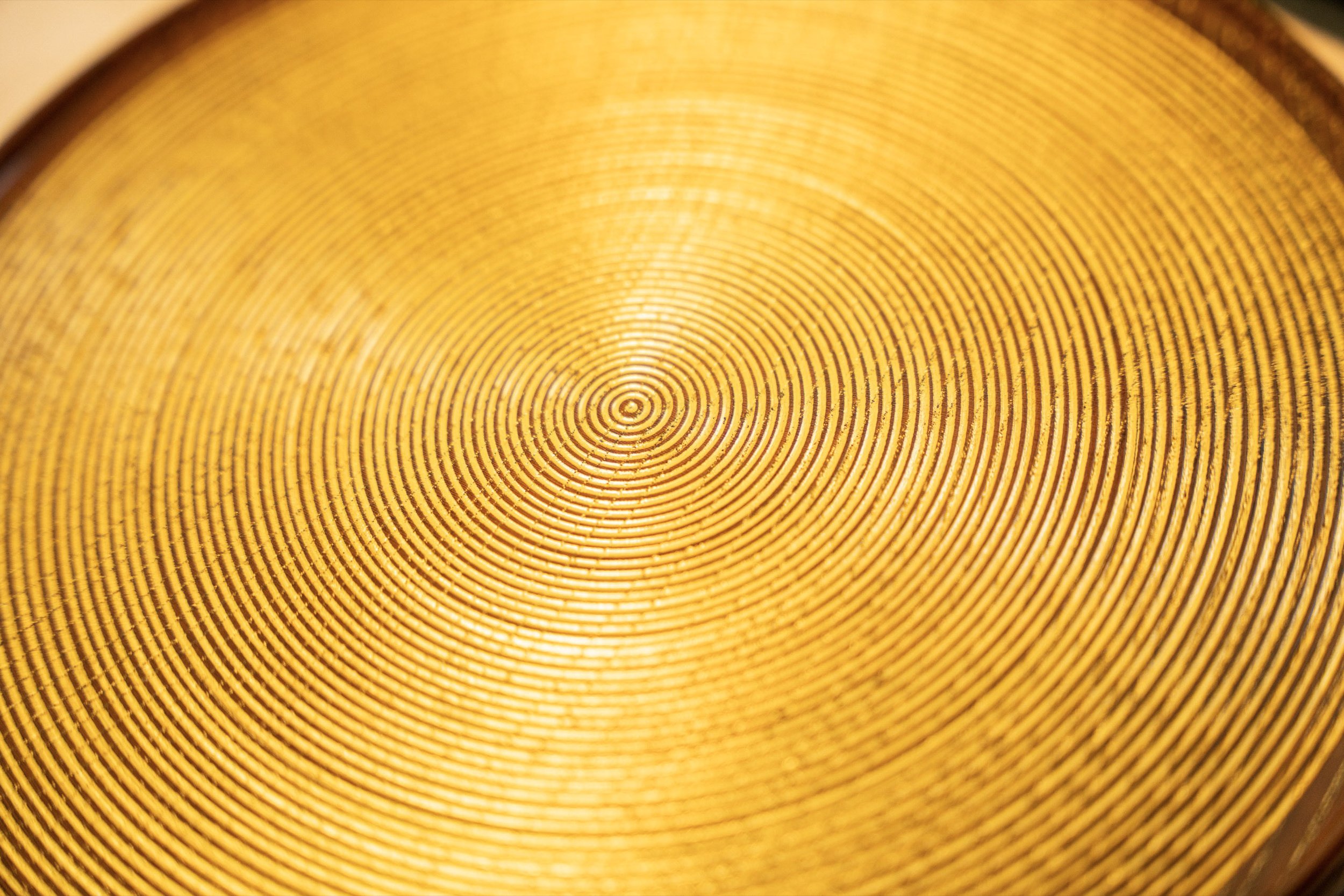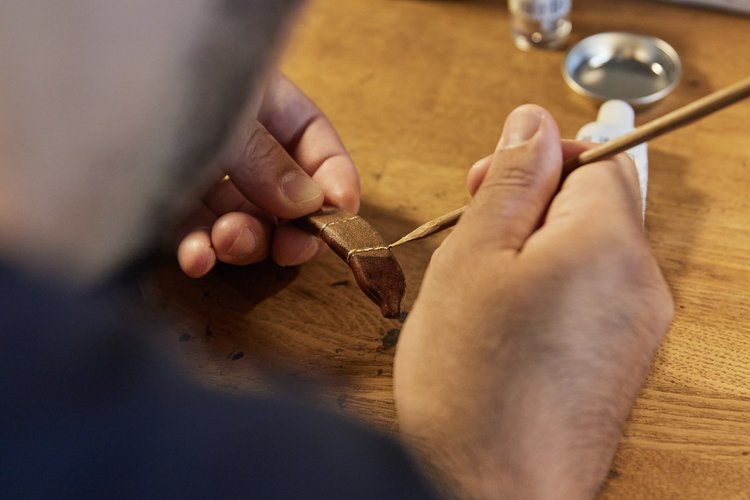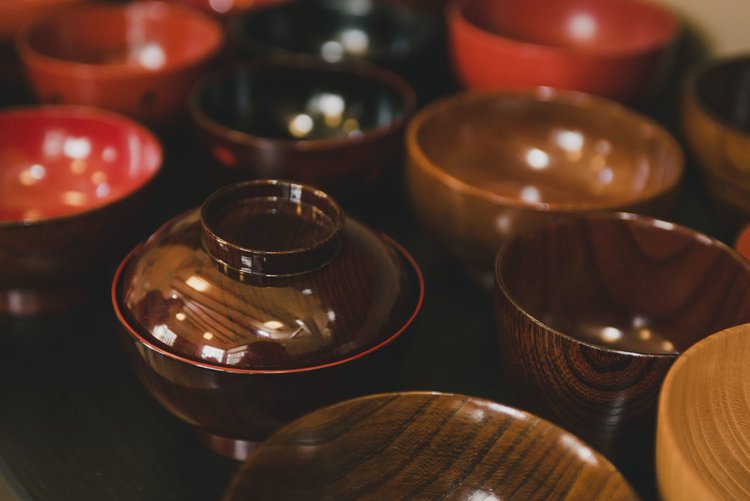Hirohiko, Kiji-mise Lacquerware Master
“I learn from people, I learn from things, I learn from nature.”
After years of honing his craft, kiji-mise lacquerware artisan Hirohiko observes everything. Pushing up the frames of his rounded, gold glasses, he animatedly recounts tales of wandering through the local forests, searching for the exact piece of lumber to source for his lacquerware pieces. From the location of minuscule bumps and bends on tree bark to the unique swirling patterns of various wood grains, in even the world of the miniature, Hirohiko finds inspiration to imbue in his lacquerware practice.
“When I look at the tree (to select), I look at the surroundings, I look at the color of the bark, I check if there are any stumps of branches that have come off – which let me peer inside to see the color of the grain,” he explains. It’s a creative process that can take more than a handful of months from start to finish, and it includes finding the tree, drying the lumber, carefully carving the base using an array of different tools, and finally, painstakingly layering on coat after coat of urushi lacquer, each requiring a full day to dry.
While lacquerware itself is an artistic practice with over 1300 years of cultural tradition, the kiji-mise Yamanaka style is a relatively newer field – dating back a mere five centuries instead of a millennium. Originating in the Azuchi-Momoyama era (1573-1594), the lacquerware style was originally adapted to suit the interest of visitors to the region’s famous onsen. Rather than coat the wood in opaque swatches of red or black – a standard practice for other lacquerware styles, like wajima-nuri – the Yamanaka style exposes the unique, natural patterns of the wood grain by applying thin layers of lacquer.
“What I end up selecting, though, depends on the product I’m making.” Every choice in the process is one that Hirohiko thoughtfully contemplates, whether it be the shape of the carving blade, the size of the wood, or the number of urushi layers needed to showcase the pattern of grain beneath. However, it’s not just the physical matters that he considers; he also is acutely attuned to the changing tastes and preferences of customers, considering the Yamanaka tradition so rich as a direct result of its continued reimagination for modern times.
In regards to the alterations he makes in today’s world, Hirohiko explains that “rather than creating luxurious lacquerware, we create things that onsen customers want to buy as omiyage. That hasn’t changed at all since we first started,” he continues, referencing one of the more popular of his products bought as a souvenir, the miso soup bowl. “Drinking miso soup – that certainly hasn’t changed. But, what has changed is the living styles. Now there’s Japanese food as well as foreign food. The customers who come to Yamanaka aren’t just Japanese but foreigners too. So, we need to change – the shape, the design, the color – to best suit the customer and the times.”
Continuing the tradition as the 4th generation of five successive kiji-mise style lacquerware masters, Hirohiko has experienced since birth not only the importance of living in harmony with the natural world but also the importance of continually learning. “Growing up, I could always see my father creating his lacquerware pieces in the workshop. Just by watching him, I naturally grew to understand the process.” And although his father Ryozo, a National Living Treasure for kiji-mise, was a major influence on Hirohiko’s artistic development, the decision to become a craftsperson came from Hirohiko alone.
“There was no other profession that I wanted to pursue. It was just a natural choice for me.” However, despite the ease with which he committed himself to a lifetime of refining his craft, the journey toward becoming a Master was by no means instantaneous.
“I practiced for ten years,” Hirohiko explains, leaning forward eagerly as he shares about the process. “My apprentice period and my craftsman period overlapped–I would receive orders for clients but made it exactly according to the specifications.” Following an arduous period of honing his expertise, Hirohiko finally began confidently designing his own original creations. However, as Hirohiko notes with a shy laugh, “my father never officially recognized me as completing my apprenticeship, even after 10 years had passed.” After a short pause, and with another small smile, he admits, “Even to this day, my father still hasn’t said anything recognizing me as a master. Of course, I still feel like I’m learning and developing my craft everyday. Even still.”
From early mornings to late nights, weekdays and weekends, there’s almost nothing keeping Hirohiko from refining his craft – nothing except the brutal humidity of Japanese summers. “Now that it’s getting cooler, it’s easier to work,” Hirohiko jokes bashfully. “This summer was so hot, I hardly worked. But lately I’m working on Saturdays, after dinners – if there’s something I want to do, I go back to the studio.”
When asked if the relentless work cycle ever feels monotonous, Hirohiko starts shaking his head before the question even finishes. “When I’m creating new things, I find a lot of joy. Being able to challenge myself to do something new is exciting and fulfilling.” He pauses, sheepishly confessional. One can imagine he’s surreptitiously checking to ensure his father isn’t eavesdropping right around the corner of the workshop. “Though sometimes, if I receive an order with a difficult shape or the deadline is too short – well, it isn’t always all just fun.”
But it’s not just an enjoyment for lacquerware that fuels Hirohiko’s zeal for the craft – pride also plays a significant part. When asked about the proudest moments of his artistic career, Hirohiko notably does not mention himself. Instead, he replies, “When my father was designated a National Living Treasure – that meant a lot. And also, when my son decided to pursue the same profession too, I was overjoyed.”
Even today, the family continues to work together, sharing space as well as insight. “I work alongside my father,” a craftsman who is now comfortably in his 90s and still tirelessly creating. As Hirohiko does out in nature, searching for the next stroke of inspiration, he takes great joy in observing his father and his son in the workshop. “We focus on our own things. But we still continue to work together side-by-side.”
And every day, those family ties exist as a reminder to Hirohiko to continue dedicating himself to the lacquerware tradition: “My father told me – even when I was young – to always keep learning. He passed down those three philosophies to me [to learn from people, from things, from nature]. With that in mind, I keep listening, and I keep watching.”
Read more about Hirohiko’s kiji-mise lacquerware workshop and experience here.
About the Author: A creative writer and Japanese Literature and Culture scholar, Taylor Bond focuses her academic research on cultural formation, folklore, and East Asian culture. Her creative work includes both prose and poetic content, often exploring themes of the body and lyrical surrealism.







